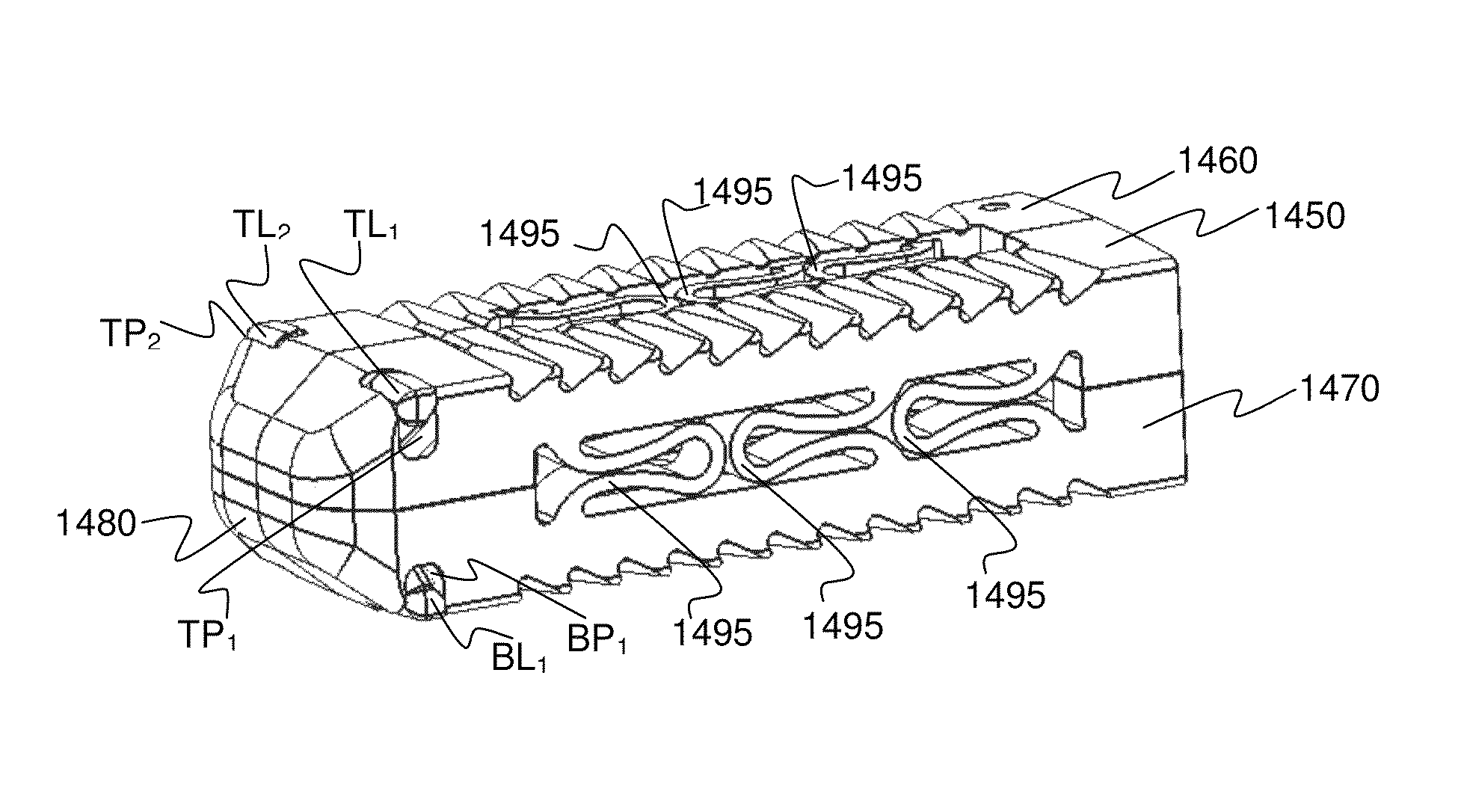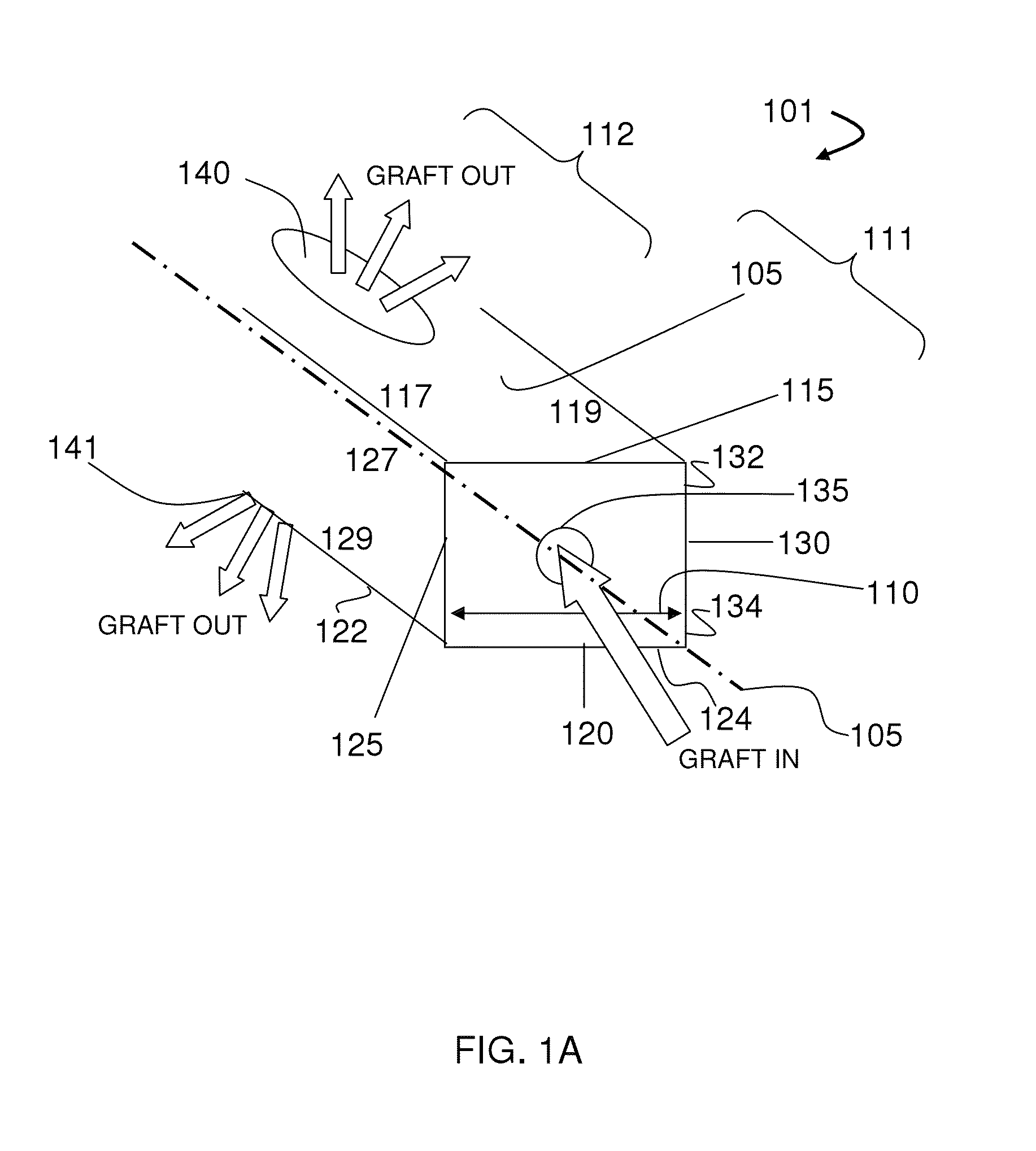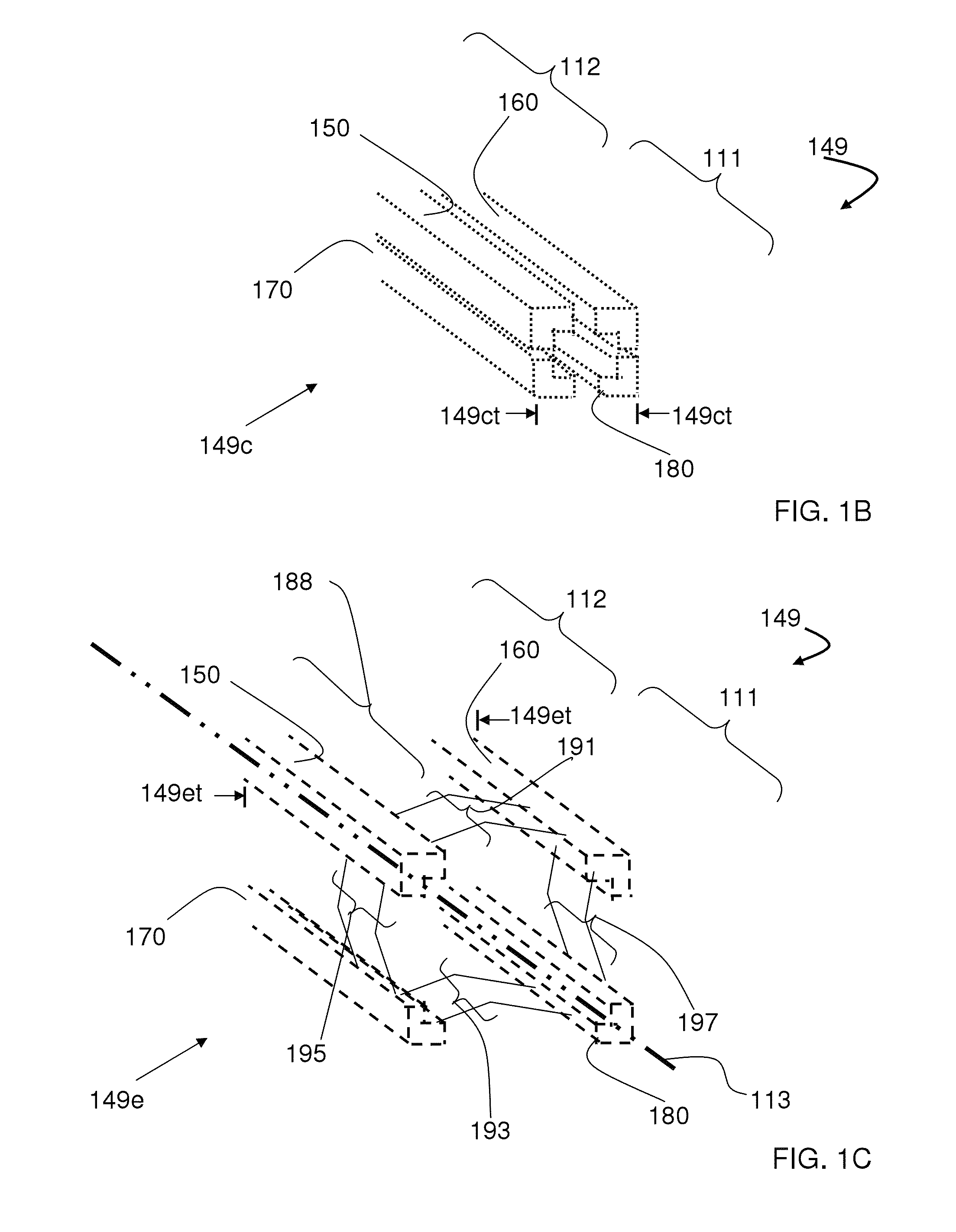Stabilized intervertebral scaffolding systems
a scaffolding system and intervertebral technology, applied in the field of intervertebral scaffolding systems, can solve the problems of preventing the fusion of the intervertebral space, unable to provide a path for bone graft insertion, and unable to fill the space surrounding the cag
- Summary
- Abstract
- Description
- Claims
- Application Information
AI Technical Summary
Benefits of technology
Problems solved by technology
Method used
Image
Examples
Embodiment Construction
[0038]The teachings herein are directed to intervertebral scaffolding systems having a stabilizer for stabilizing and / or retaining support beams upon expansion of the scaffolding in an intervertebral disc space. The systems can have, for example, a central beam having a proximal portion having an end, a grafting portion having a top and a bottom, a distal portion having a end, a central beam axis, a graft distribution channel having an entry port at the end of the proximal portion, a top exit port at the top of the grafting portion, and a bottom exit port at the bottom of the grafting portion. These systems can also include a laterovertically-expanding frame having a lumen, a first top beam, a second top beam, a first bottom beam, and a second bottom beam, each having a proximal portion and a distal portion, and each operably connected to each other at their respective proximal portions and distal portions with connector elements to form the laterovertically-expanding frame that is ...
PUM
 Login to View More
Login to View More Abstract
Description
Claims
Application Information
 Login to View More
Login to View More - R&D
- Intellectual Property
- Life Sciences
- Materials
- Tech Scout
- Unparalleled Data Quality
- Higher Quality Content
- 60% Fewer Hallucinations
Browse by: Latest US Patents, China's latest patents, Technical Efficacy Thesaurus, Application Domain, Technology Topic, Popular Technical Reports.
© 2025 PatSnap. All rights reserved.Legal|Privacy policy|Modern Slavery Act Transparency Statement|Sitemap|About US| Contact US: help@patsnap.com



